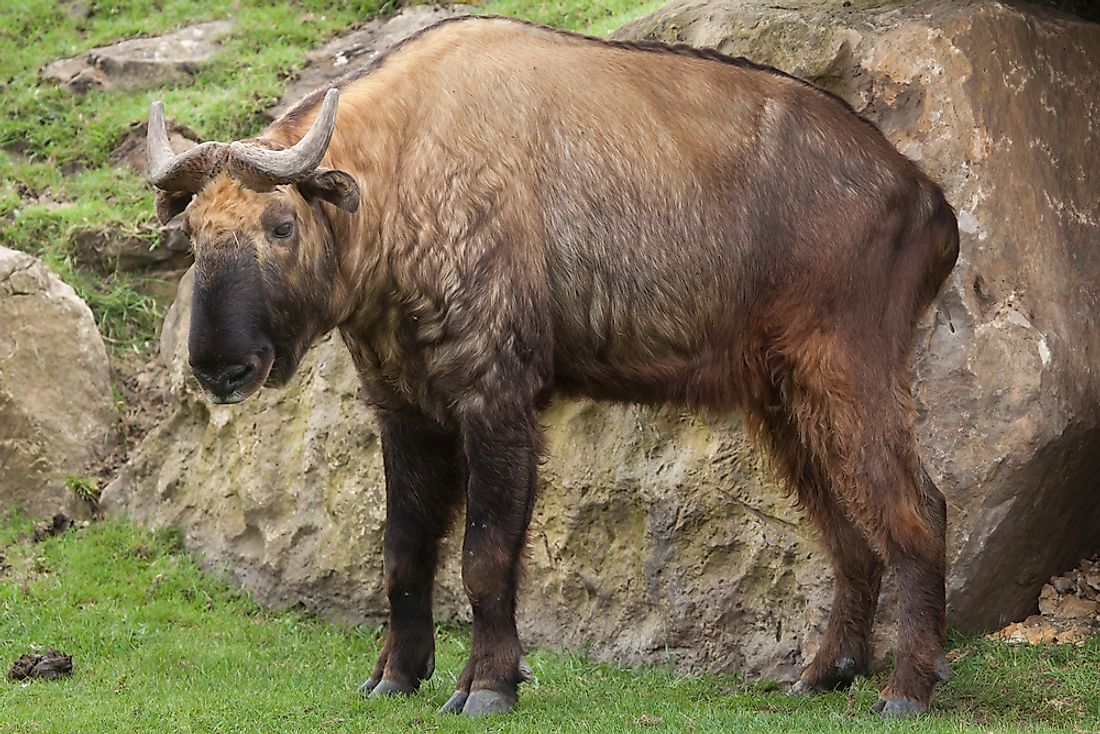Takin Facts - Animals of Asia

Also known as gnu goat or cattle chamois, the takin (Budorcas taxicolor) is a type of antelope found primarily in the Himalayan Mountains of Asia. There are four subspecies of the takin and they are the golden takin or Shaanxi takin (B. t. bedfordi), the Bhutan takin (B. t. whitei), the Mishmi takin (B. t. taxicolor), and the Sichuan takin or the Tibetan takin (B. t. tibetana). In the past, the Ovibovini tribe has placed the takin together with the muskox, but most recent mitochondrial research revealed that the animal is closely related to Ovis (sheep). Due to the takin's physical similarities to the muskox, the animal is a good example of convergent evolution. In Bhutan, the takin is the national animal. Below are some of the facts about the takin.
4. Physical Description
The takin has short legs which are supported by large hooves that are two-toed. The animal has a stocky body with a deep chest; it also has a large head with a distinctive long arched nose. Both male and female takin have small horns about 12 inches running parallel to their skulls before turning upwards in a sharp point. The takin has a long white colored shaggy coat with a dark stripe running along the back. According to reports, the male takin is usually larger weighing around 660 to 770 pounds while females weigh between 550 to 660 pounds. The takin stands at 63 to 87 inches in-head-and-body length.
3. Diet
Takin feeds on a broad range of vegetation including a variety of grasses and leaves together with bamboo flowers and shoots. The animals can easily stand on their hind legs to reach for higher vegetation; they mostly feed during the early morning and late afternoon. Groups of takin may be seen camping at a mineral deposit site for days since salt is an essential part of their diet.
2. Habitat and Range
The takin is often found in rocky grass covered alpine areas, and forested valleys at altitudes between 3,280 feet and 1,463 feet above sea level. The species can naturally be found in Bhutan, Myanmar, Northwest India, and China, and they can also be found at the Roger Williams Park, San Diego and Minnesota Zoos. Due to their habitats, the takin overlaps in range with several potentially dangerous natural predators such as the leopard, the Asiatic black bear, and more seldom with the gray wolves, tigers, dholes, and snow leopards. Allegedly, there have been reports on how both wolves and bears prey on the takin, and this is more likely due to the opportunistic nature of both predators. The snow leopard is the only confirmed predator of the takin species. However, due to their size, mature adult takin are less prone to predators. Human beings are the primary predator of the animal since they are hunted for their meat and pelts.
1. Behavior
The takin exists in small family groups of about 20 animals. However, older male tend to live in solitary from the rest. During summer seasons herds of almost 300 takin huddle together at high altitudes on the mountain slopes. The animal appears in large herds in areas with, hot springs, salt licks, and favorable feeding sites. The animal's mating season occurs between July and August, and the gestation period is eight months where a single young species of the animal is born. The animals prefer sunny spots during sunrise and forested regions during winter thus migrating from upper to lower pastures. The takin has a distinct cough which they use to alert each other when they sense danger or when there is a disturbance. In this case, the animals run for cover in dense underbrush such as bamboo thickets and camouflage themselves by lying on the ground.











